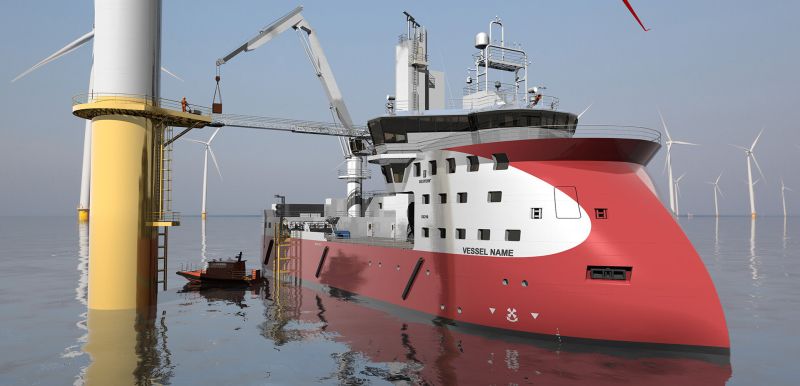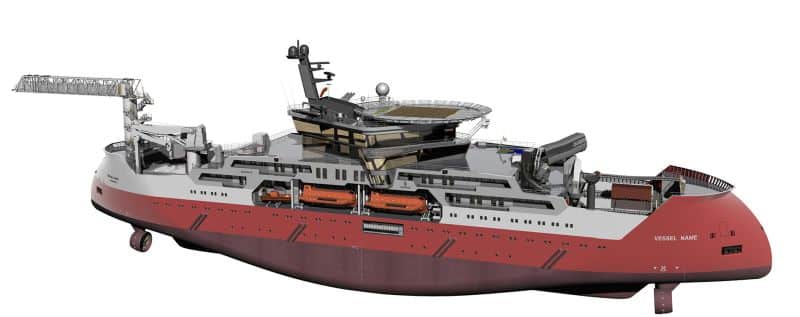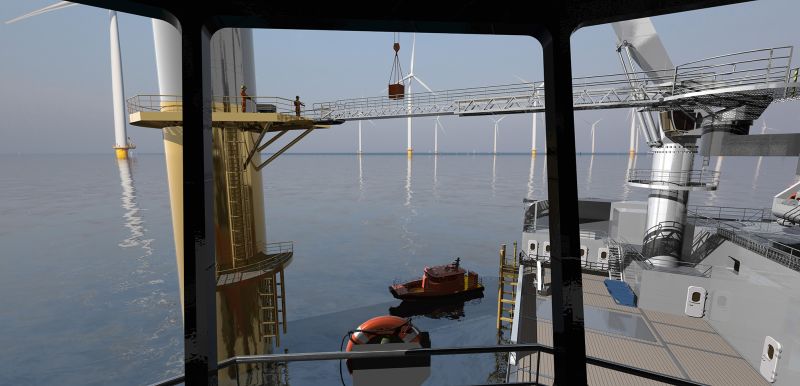
[ad_1]

Ulstein has developed a ship with two sterns and propellers in each corner, which is ideal for offshore operations requiring continuous positioning. “The TWIN X-STERN is extremely manoeuvrable, comfortable to be on board and very environmentally friendly,” says Øyvind Gjerde Kamsvåg, Chief Designer at Ulstein Group.
Most ocean vessels still run on fossil fuels, accounting for over 1 billion metric tons of global greenhouse gas emissions a year. Despite incentives to promote more environmentally friendly vessels, international shipping emissions have increased by 9.6 per cent from 2012 to 2018. More radical steps must be taken if the industry is to achieve the IMO target of a 50 percent reduction in annual emissions by 2050.
Ulstein Group has a clear ambition of being at the forefront of the technology development required to achieve zero-emission offshore operations by 2050. One of the most important design aspects in achieving this aim is the company’s innovative hulls, including the novel TWIN X-STERN .
.

Image Credits: ulstein.com
Major fuel savings
“The key advantage of the hull is its ability to stay in position. The secret lies below the waterline. TWIN X-STERN has propellers in each corner, which provide maximum manoeuvrability. The hull also provides major fuel savings. We’ve received feedback from the industry that the sister patent X-STERN® result in up to 60 percent less power,” says Kamsvåg.
Ulstein Group invented the ULSTEIN X-BOW® back in 2004 and later leveraged this with the introduction of the X-STERN®, both of which have enjoyed great market success. The TWIN X-STERN was introduced in 2015 and is designed for offshore operations that require a ship to remain in position in rough weather. This concept also included other technologies to improve operations and reduce fuel consumption, such as biomechanical W2W ramps and cranes as well as a new propulsion unit concept.
was introduced in 2015 and is designed for offshore operations that require a ship to remain in position in rough weather. This concept also included other technologies to improve operations and reduce fuel consumption, such as biomechanical W2W ramps and cranes as well as a new propulsion unit concept.

Ulstein’s innovative TWIN-X-STERN hull design was nominated for the Innovation of the Year award at the 2016 OSJ conference.
hull design was nominated for the Innovation of the Year award at the 2016 OSJ conference.
The TWIN X-STERN concept has been developed further since 2015, and the TWIN X-STERN hull is now commercially available on a range of vessels, including vessels servicing offshore wind turbines.
“By having excellent performance in either direction, you avoid having to turn the ship to follow weather changes. This is traditionally required maybe 50 percent of the time, depending on the operation being performed. You save an enormous amount of time by not turning the vessel. The total energy savings are significant compared to traditional hulls,” says Lars Ståle Skoge, Commercial Director at Ulstein Design & Solutions.

Ulstein’s SX210 design for service and maintenance of offshore wind turbines incorporates the TWIN X-STERN hull design.
hull design.
Better comfort and safety on board
The comfort and safety of the crew is another area where TWIN X-STERN excels. Vessels with Ulstein’s innovative hulls have reduced motion in the water, avoiding the slamming from waves experienced by vessels with traditional hulls. This also extends the lifetime of onboard equipment as it is not exposed to strong vibrations and impact.
excels. Vessels with Ulstein’s innovative hulls have reduced motion in the water, avoiding the slamming from waves experienced by vessels with traditional hulls. This also extends the lifetime of onboard equipment as it is not exposed to strong vibrations and impact.
“It’s a completely different experience to be on board. It’s built to operate in very strong currents and is less limited by weather conditions. TWIN X-STERN is in the same family as our other two revolutionary hulls, X-BOW and X-STERN, and provides similar benefits, just in a different set-up optimised for the offshore wind segment,” says Kolbjørn Moldskred, Sales Manager at Ulstein Design & Solutions.
“Offshore wind is a major growing market. Our new hull has the potential to service more wind turbines per day than other hulls. It’s optimised for exactly these types of positioning operations,” he points out.

Bridge view of a TWIN-X-STERN vessel servicing an offshore wind turbine.
vessel servicing an offshore wind turbine.
Strong demand for greener vessels
Companies that rely on ocean-going vessels are under pressure to reduce their environmental footprint. In addition to the IMO target, the European Parliament has voted for a similar reduction.
The demand for greener vessels for offshore wind farms is expected to increase with the growth of the offshore wind market, which is projected to reach USD 1 trillion by 2040.
Ulstein Group is an international group of shipbuilding, ship design and supporting companies. Founded in 1917, it is also one of Norway’s largest shipbuilders.
Text used by courtesy of Innovation Norway and The Explorer.
Reference: ulstein.com
[ad_2]
This article has been posted as is from Source